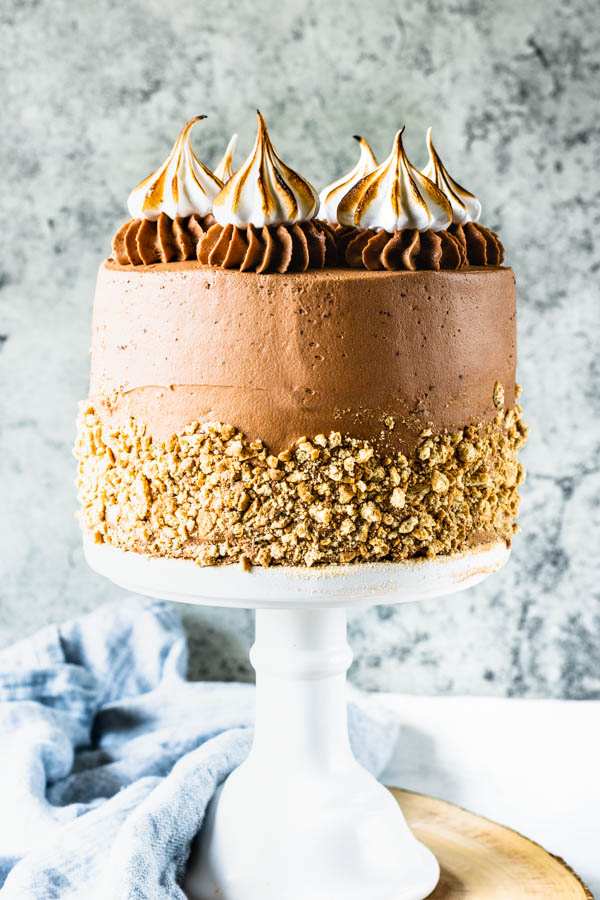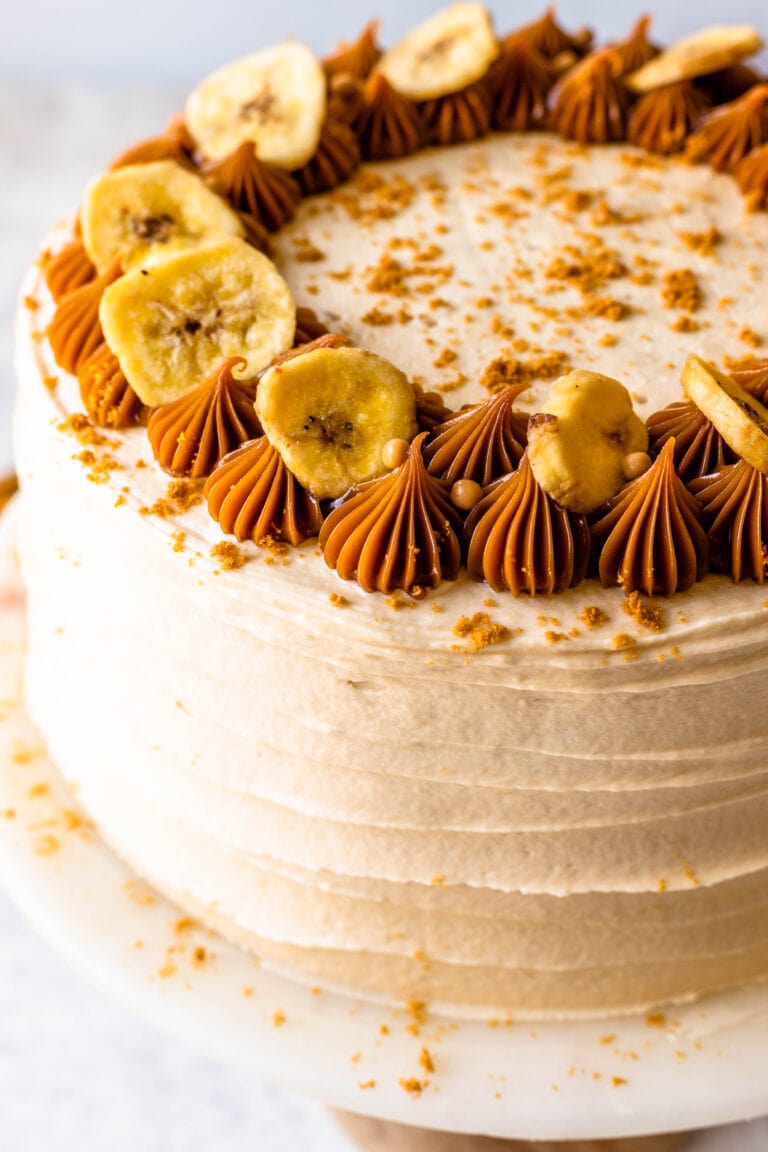How to Make a Cake From Scratch
Let’s talk about how to make a cake from scratch! There’s something magical about creating your own cake. It’s more than just mixing ingredients, it’s about controlling every flavor, texture, and detail.
While boxed cake mixes can be quite convenient, making your cake from scratch opens up a world of customization and quality that boxed mixes can’t match. Today, I’m diving into the reasons why homemade cakes reign supreme, how to easily customize them, and some tips to help you create the perfect cake. Plus, I’ll share fun ways to frost and decorate your cake to make it truly special!
At the end of the page find a simple vanilla cake recipe, and many suggestions on other cake recipes I have here on the blog.
This post may contain affiliate links. I earn a commission from qualified purchases. Please read our Privacy policy here.
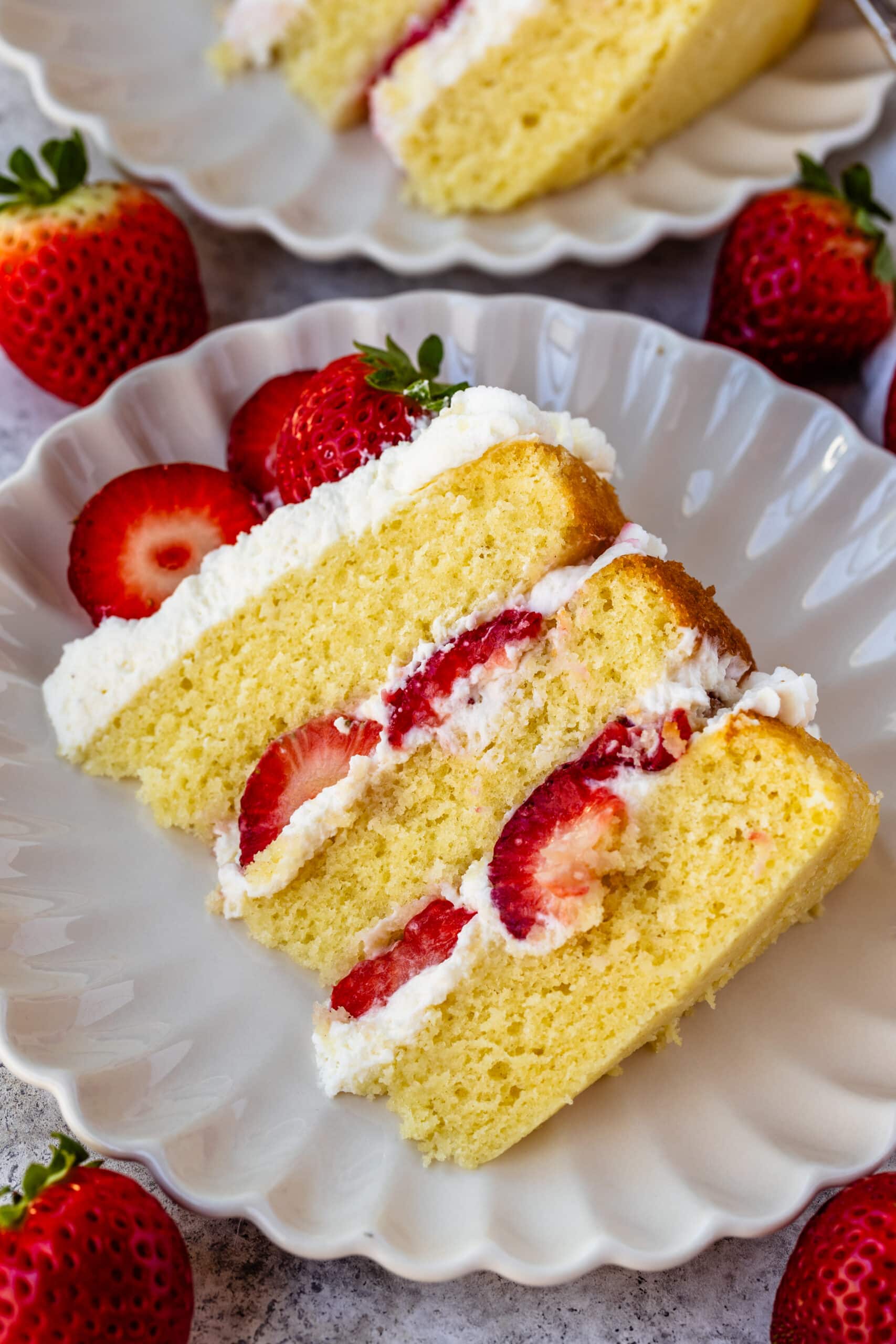
Why Make a Cake from Scratch?
- You Have Control Over Ingredients: When you learn how to make a cake from scratch, you get to decide what goes into it. You can choose high-quality ingredients, adjust sweetness levels, or make it gluten-free or vegan if needed. No artificial flavors or preservatives, just pure, fresh ingredients.
- Creates a Better Flavor and Texture: Cakes made from scratch offer a depth of flavor that’s hard to beat. The combination of butter, sugar, eggs, and flour creates a more complex, and authentic flavor than any boxed mix can achieve. Plus, you can add ingredients like real vanilla, fresh fruit, or citrus zest for a personal touch.
- Ability to Personalize: Do you want to add chocolate chips, swirl in some caramel, or throw in seasonal fruits? Making your cake from scratch allows you to get creative with flavors and fillings, ensuring your cake stands out. It also allows for other types of customizations according to dietary preferences, such as low-fat ingredients, reducing the amount of sugar, or changing the type of flour to gluten-free, if needed. However, always be mindful that anytime you experiment with a recipe or different ingredients, you run the risk you cake not turning our as expected. Recipes posted by recipe developers are usually thoroughly researched and tested, so when you go off course you enter uncharted territory, but don’t let that discourage you! In any case, you can always leave a comment asking the creator of the recipe about said substitutions in case they don’t already offer alternatives within the recipe.
- Pride in Craftsmanship: There’s something incredibly satisfying about baking a cake from scratch. It’s a labor of love, and the sense of accomplishment when you see your perfectly baked cake come out of the oven is unbeatable.
The Best Cake Recipe
Making a cake from scratch can feel rewarding and allows you to customize it exactly to your taste. Here’s a general guide to help you create a delicious and perfectly textured cake:
1. Prepare Your Ingredients and Equipment:
- Gather Ingredients: Ensure that the butter, eggs, and any dairy (like milk or sour cream) are at room temperature. Also measure out any ingredients you will need and have them ready to go.
- Preheat Your Oven: Cakes bake best when the oven is preheated to the correct temperature. Make sure to give your oven enough time to fully preheat.
- Prepare Your Cake Pans: Grease the pans with butter or non-stick cooking spray, and line the bottoms with parchment paper to prevent sticking. This makes it easier to release the cake after baking. Another way to grease the pans is to coat them with butter evenly, and sprinkle flour all over the pan, making sure all crevices are greased and floured.
- Dry Ingredients: In a separate bowl, whisk together your flour, baking powder (or other leaveners), and salt. This ensures the leavening agents are evenly distributed.
- Wet Ingredients: If your recipe calls for milk, buttermilk, or another liquid, have it measured and ready to go.
2. Cream the Butter and Sugar:
- Creaming Method: Beat the butter and sugar together until light and fluffy. This incorporates air into the batter, resulting in a lighter, fluffier cake. Scrape down the sides of the bowl periodically with a rubber spatula, to ensure even mixing. I also like to add some oil to some cake batters such as the recipe included below.
- Pro Tip: Add oil to your cake batter. Cakes made with oil tend to be more stable and less prone to drying out, even when refrigerated. Additionally, oil coats the flour proteins better than butter, inhibiting gluten development, which leads to a more tender cake.

3. Add Eggs One at a Time:
- Incorporating Eggs: Add the eggs one at a time, beating until completely incorporated after each addition before adding the next egg. This helps emulsify the batter and prevents it from curdling.
- Pro Tip: If the mixture starts to look curdled, don’t worry too much—this often corrects itself once the flour is added.
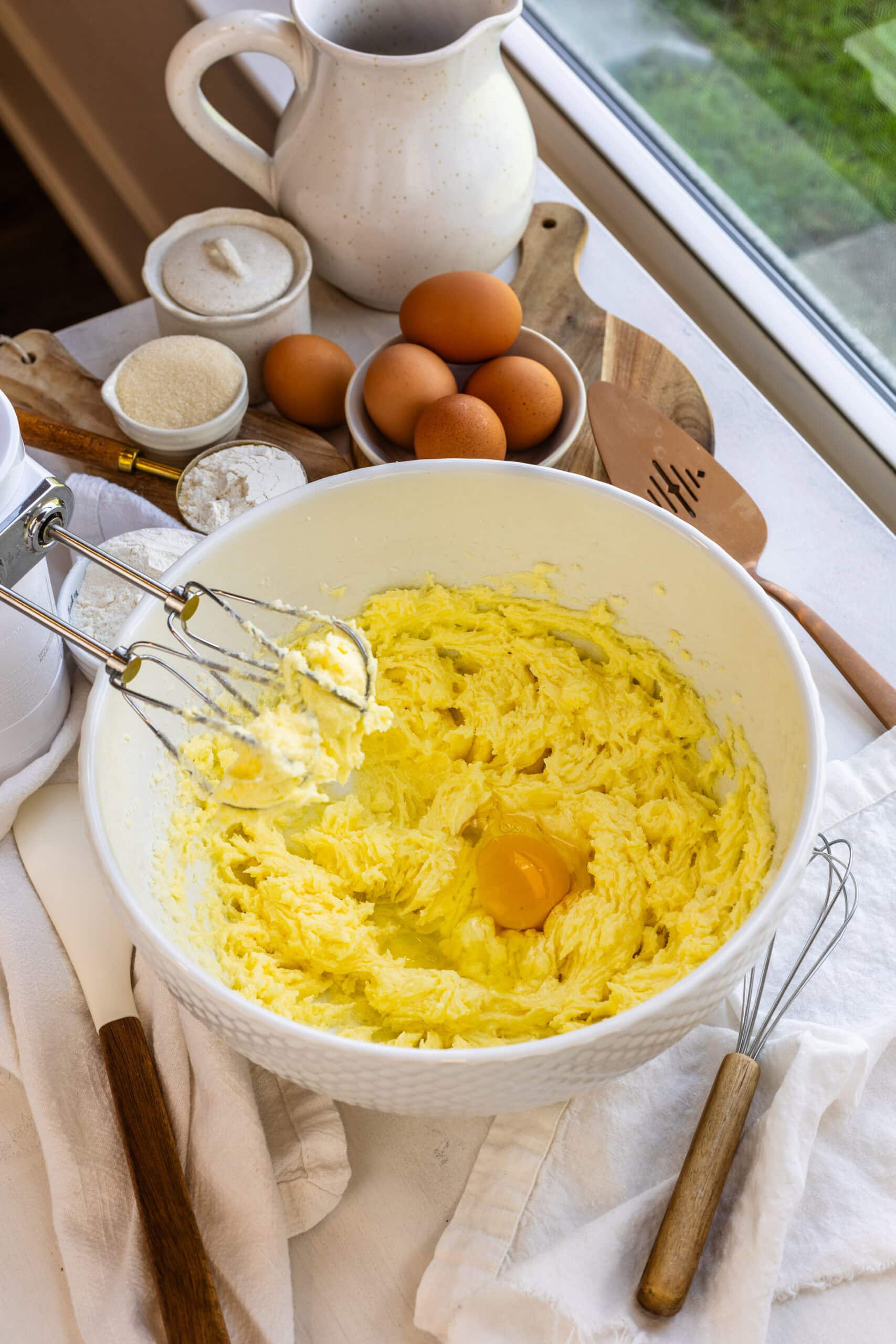
4. Alternate Dry and Wet Ingredients When Adding:
- Alternate Additions: Add the dry ingredients to the butter mixture in thirds, alternating with the wet ingredients. Begin and end with the dry ingredients, mixing until just combined to avoid overmixing, which can make the cake dense.
- Pro Tip: Use a low speed when mixing in the dry and wet ingredients to avoid overworking the batter. You can also finish mixing with a spatula to avoid over mixing.
- If the Recipe Calls for Add-ins: Gently fold in extras like chocolate chips, fruit, or nuts at this point. Be careful not to over mix the batter once they’re added.

5. Pour Batter Into Prepared Pans:
- Divide Evenly: Ensure the batter is evenly divided between your pans, you can use a scale to help you ensure precision. Use spatula to smooth out the batter, and lightly tap the pans on the counter to release any large air bubbles.
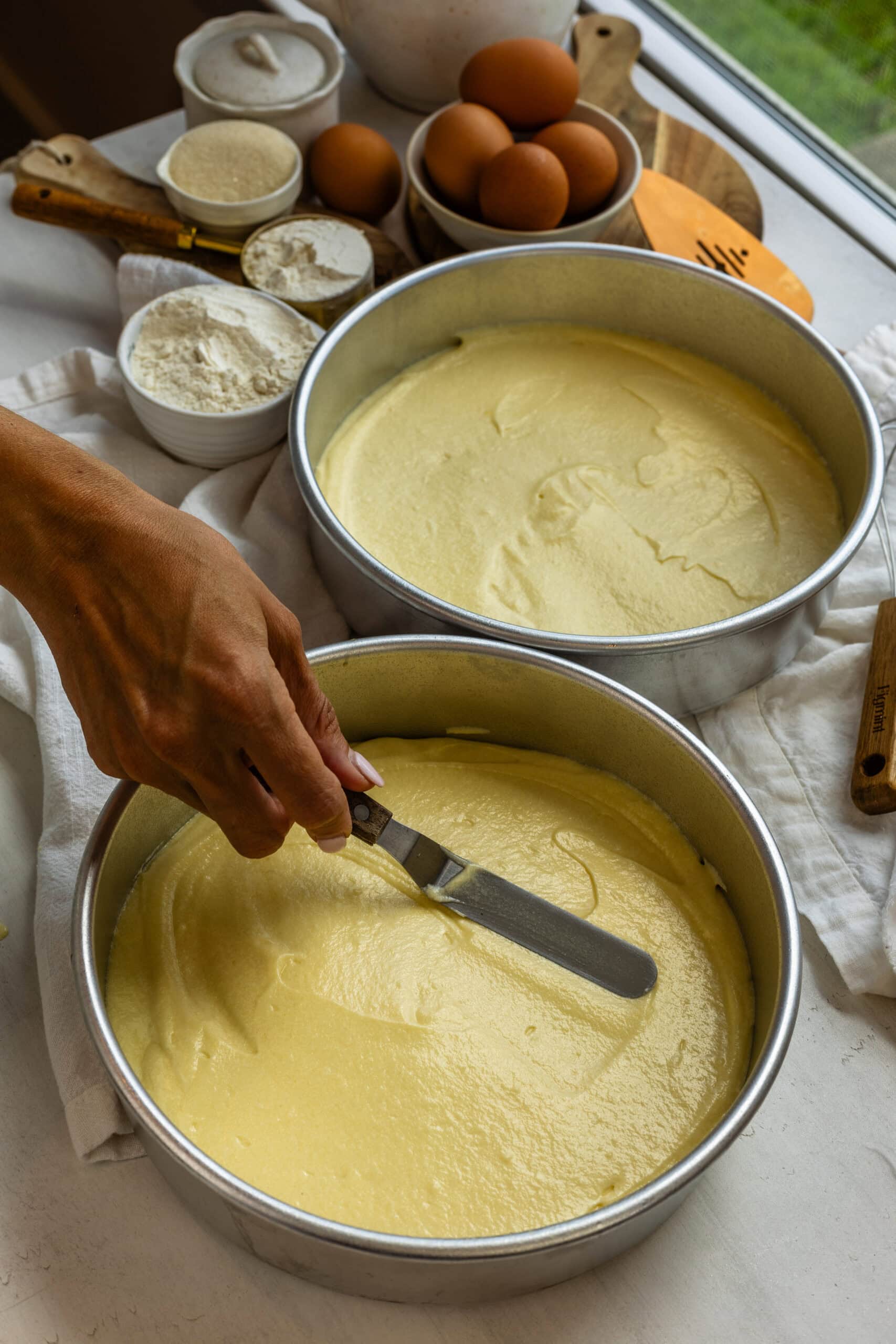
6. Bake the Cake:
- Baking Time: Place the pans on the center rack of your oven and bake until the cakes are golden brown and a toothpick inserted in the center comes out clean or with a few moist crumbs.
- Rotating Pans: If your oven bakes unevenly, rotate the pans halfway through to ensure even baking. Read more below with the oven tips.
- Pro Tip: Avoid opening the oven door too often or too early, as it can cause the cake to collapse in the middle.
7. Cool the Cake:
- Cooling in the Pans: Let the cakes cool in their pans for 10-15 minutes before turning them out onto a wire rack. This helps prevent the cake from sticking and crumbling.
- Cool Completely: Wait until the cakes are fully cooled before frosting to avoid melting the frosting.
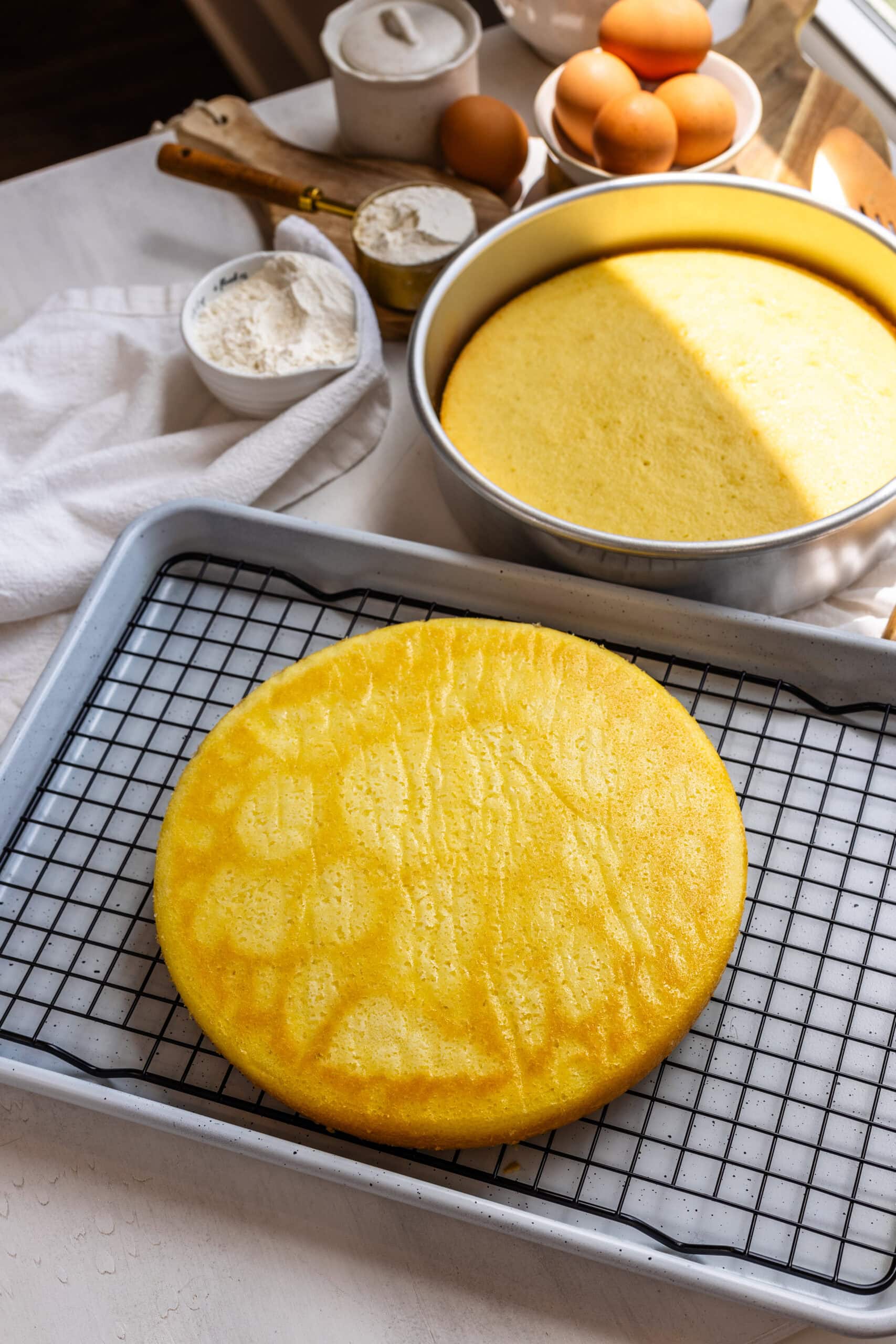
How to Customize a Cake From Scratch
Once you have a basic cake recipe down, you can easily tweak it to suit your preferences or the occasion. Here are some fun ways to make a cake your own:
- Flavor Add-Ins:
- Citrus Zest: Brighten up your cake by adding lemon, lime, or orange zest to the batter.
- Spices: Cinnamon, nutmeg, cardamom, or pumpkin spice can add warmth and complexity to a basic cake.
- Extracts: Experiment with different extracts like almond, coconut, or peppermint for a unique flavor profile. Remember that a little bit of extract can go a long way!
- Liquor or Coffee: Add a tablespoon of rum, Kahlúa, or brewed espresso for a richer, more sophisticated cake.
- Mix-ins:
- Chocolate Chips or Nuts: Stir in chocolate chips, chopped nuts, or dried fruit to add texture and flavor.
- Swirls: Swirl in caramel, peanut butter, or Nutella to create a marbled effect in your cake.
- Fresh fruit: Additions such as blueberries, chopped strawberries, or peaches can be a great addition to cakes.
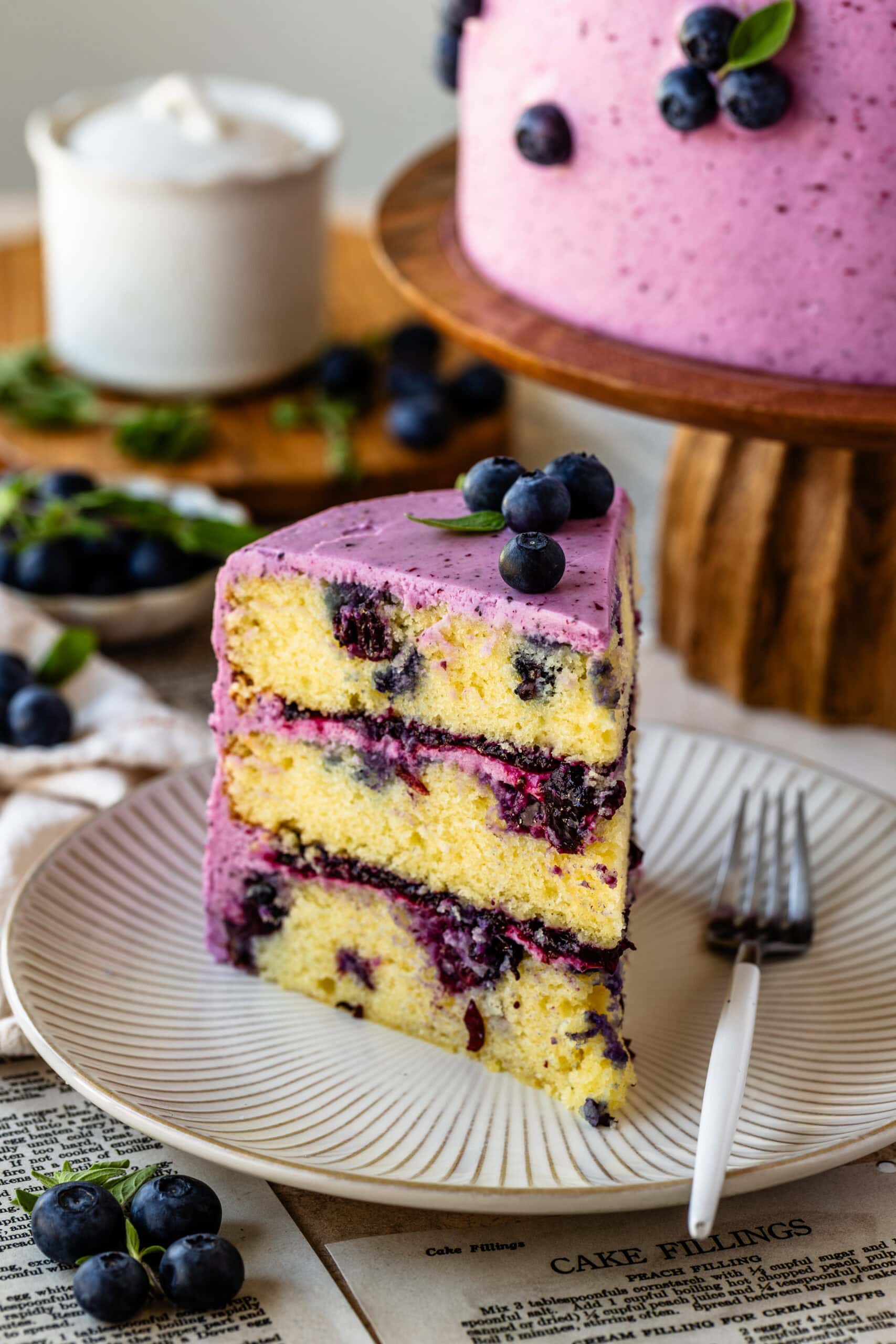
Tips and Tricks for Making a Cake From Scratch
Making a cake from scratch doesn’t have to be intimidating. These tips and tricks will help ensure success when baking:
- Room Temperature Ingredients: Make sure your butter, eggs, milk, and sour cream are at room temperature before starting. This helps them incorporate more evenly, leading to a smoother batter and better texture. When it comes to eggs, simply 5 minutes in a bowl with warm water can quickly bring the eggs to room temperature. Butter is usually best used when its at 72ºF, which can take about 30 minutes to an hour to be achieved depending on the temperature of the kitchen. About the milk and sour cream, I usually take them out of the fridge about 20 minutes before starting a recipe.
- Measure Accurately: Baking is all about precision. Use a scale to prevent adding too much or too little of any ingredients. Try to find recipes that indicate grams or ounces, and do use your kitchen scale when measuring the ingredients.
- Don’t Over Mix: Once the flour is added, mix until just combined. Over mixing can lead to a tough, dense cake as it activates too much gluten development.
- Check for Doneness Properly: Don’t rely solely on baking times; ovens can vary. Instead, use a toothpick inserted in the center of the cake—if it comes out clean or with a few moist crumbs, the cake is done.
- Let It Cool Completely: Patience is key! Wait until your cake is fully cooled before frosting, or your frosting will melt and slide off, ruining your new creation!

Eggs in Baking
In baking, eggs play multiple roles, such as providing structure, moisture, fat, and emulsification. How they are used can impact the texture, flavor, and appearance of a cake. Let’s break down the different methods:
Whole Eggs: When a recipe calls for whole eggs, both the yolk and the whites are incorporated into the batter. This method is the most common because it provides a balanced mix of fat (from the yolks) and structure (from the whites). Cakes made with whole eggs tend to be richer and moist, with a tender crumb. This method is used for cakes like butter cakes, pound cakes, and many classic sponges.
Using Only Egg Whites: Some recipes, like angel food cakes, or meringue-based desserts, use only egg whites. The purpose of this method is to focus on the protein in the whites for a lighter, airier structure. Cakes made with only egg whites are light, fluffy, and have a more delicate texture. They tend to be low in fat and often have a whiter color.
Separating Egg Whites and Yolks: In some recipes, you may be instructed to separate the eggs, whisk the whites separately to stiff peaks, and then fold them into the batter. This method is common in light, airy cakes like chiffon cakes or sponge cakes. Separating and whisking the whites helps incorporate more air into the cake, making it fluffier and more delicate. This technique is especially useful for cakes where a spongy, airy texture is desired.
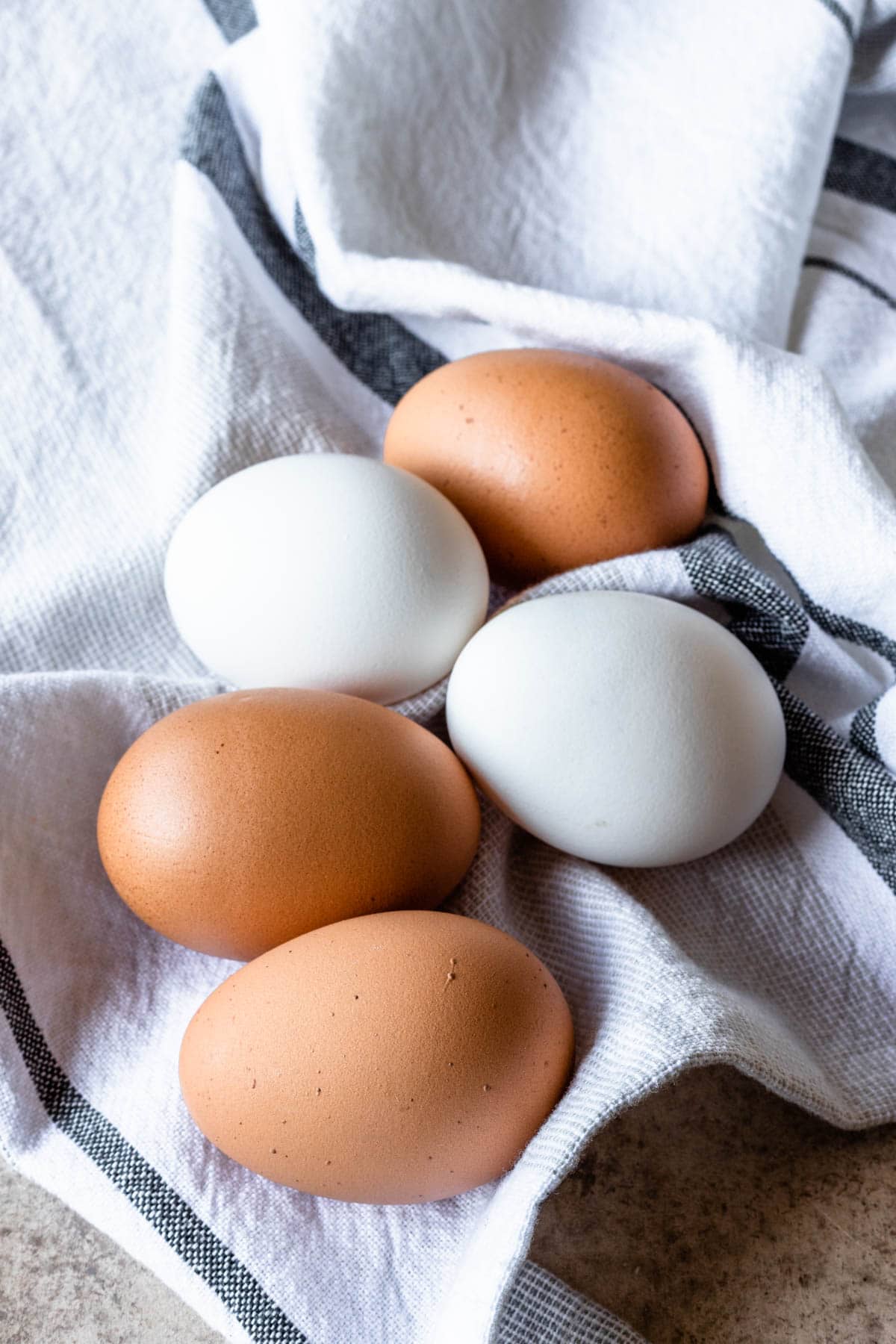
Understanding Your Oven
In this post I talk a lot about understanding your own oven when baking macarons, but a lot of the tips can be applied to baking cakes as well. Here is a quick overview of what to pay attention to when it comes to your home oven.
Use an Oven Thermometer
Using an oven thermometer is important because it ensures that your oven is heating to the correct temperature, which is crucial for baking success. Most ovens are inaccurate and can run hotter or cooler than the set temperature. This can lead to uneven baking, burnt edges, undercooked centers, and inconsistencies with baking time. An oven thermometer allows you to monitor the actual temperature inside your oven, helping you make any necessary adjustments to ensure your cake bakes evenly at the appropriate temperature.
Know Your Oven
Get to your own oven. This can take time. Each oven works differently. The first step to knowing your oven is having an oven thermometer in there. Also your oven will work differently depending if it’s gas, electric, or convection. Let’s take a better look:
- Gas Ovens: Gas ovens tend to have more moisture and can create uneven heat, especially if the flame doesn’t distribute evenly. They often have hot spots, so it’s important to rotate your cake halfway through baking.
- Electric Ovens: Electric ovens typically provide more consistent, dry heat. However, they can take longer to preheat. Be sure to check the calibration using an oven thermometer, as even electric ovens can have slight temperature variations.
- Convection Ovens: Convection ovens use a fan to circulate hot air, resulting in faster and more even baking. When using a convection oven, you’ll need to reduce the temperature by about 25°F and shorten the baking time by 10-15% to avoid over baking.
Each oven type has its own quirks, but with a little adjustment and practice, you can achieve perfectly baked cakes every time!
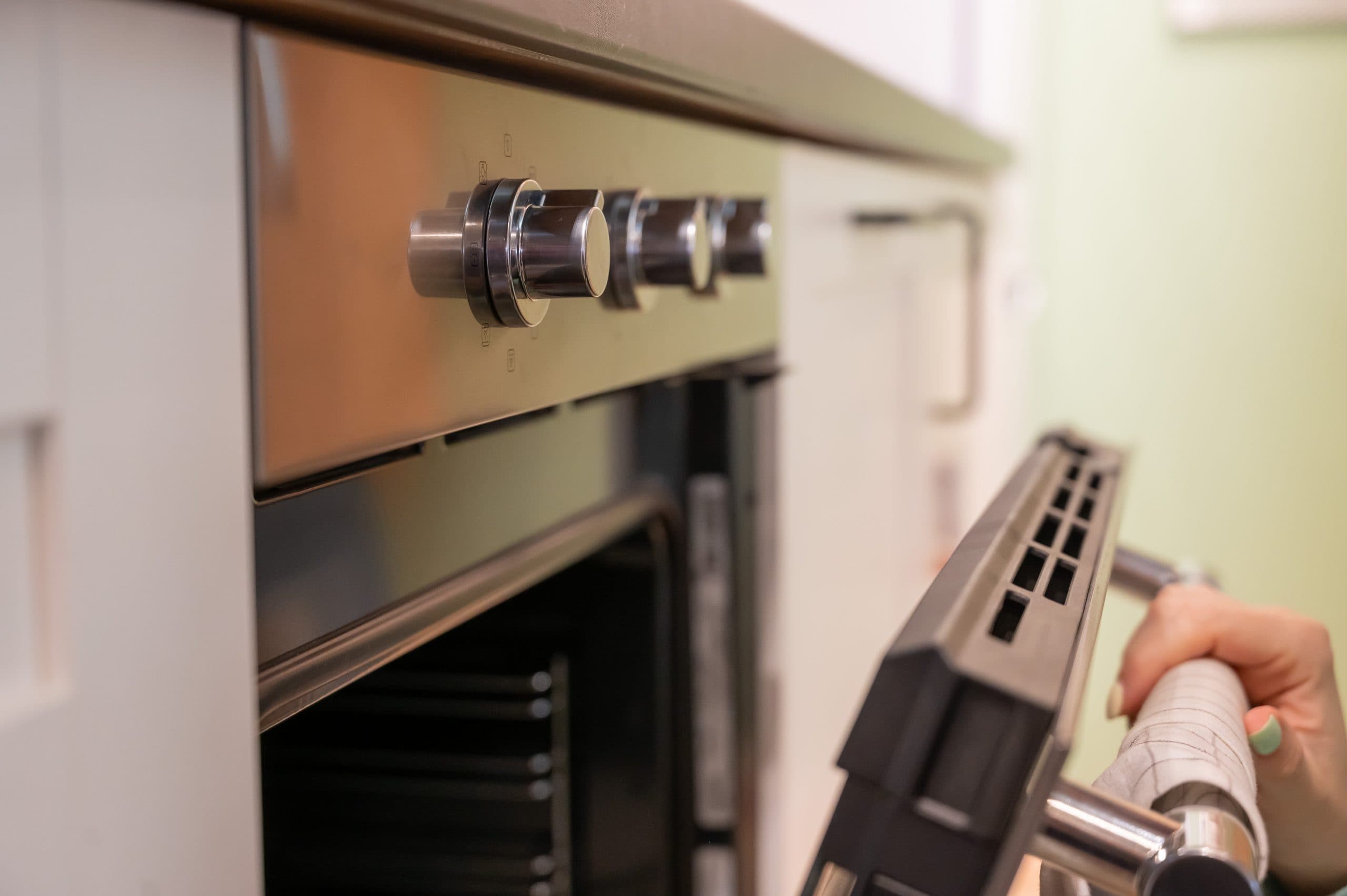
Filling, Frosting, and Decorating
Now let’s talk about the fun part, filling, frosting, and decorating your cakes
Filling Options
Besides filling your cake with buttercream, you can get creative by using different fillings that will elevate the flavor profile of your cake and add a delightful surprise with every bite.
- Fruit Compotes: Layer your cake with homemade fruit compote, jam, or marmalade like raspberry, strawberry, peach, orange, for a burst of fresh flavor. The options are endless.
- Ganache or Curd: A rich chocolate ganache or a zesty lemon curd can take your cake to the next level.
- Whipped Cream: For a lighter option, use flavored whipped cream between layers. Even better if you add some fresh sliced strawberries, or raspberries.
- Caramel Sauce: Definitely a fan favorite! Caramel sauce is easy to make, it can be made in advance and kept in the fridge for a long time, and makes for a delicious cake filling. Alternatively, you can use dulce de leche, which can be store-bought or made at home like in this recipe I have here.
- Spreads and Butters: a generous amount of peanut butter, Biscoff cookie butter, dulce de leche, or Nutella in between your cake layers can be an easy option to make your cake delicious!
- Brigadeiro: Brigadeiro is a fudge made of sweetened condensed milk, that is very popular in Brazil, where I am from. It is an amazing option to fill your cakes, and you can make it pretty much any flavor. It’s also shelf stable, doesn’t melt at high heat, and you can even use it to frost your cakes. Here are some of my recipes that use Brigadeiro as a filling or frosting (or both) – Key Lime Pie Cake, Coconut Raspberry Cake, Chocolate Coconut Cake.

Frosting & Decoration Ideas
Once your cake is baked to perfection, it’s time to have fun with frosting and decorating! Here are some ideas to inspire your creativity:
- Classic Buttercream: A versatile choice that can be easily flavored with vanilla, chocolate, or fruit. Smooth it over your cake for a traditional look or pipe it for a more decorative finish.
- Cream Cheese Frosting: Perfect for cakes like carrot or red velvet, cream cheese frosting adds a tangy richness. Top with chopped nuts or coconut for texture.
- Ganache: For a more decadent cake, pour chocolate ganache over the top, letting it drip down the sides for a luxurious effect.
- Whipped Cream Frosting: If you’re looking for a lighter option, whipped cream frosting is airy and less sweet. Add fresh fruit for a refreshing, elegant touch.
- Naked Cake: If you prefer a more rustic look, try a naked cake by frosting only between the layers and leaving the sides exposed. This look is perfect for weddings or more natural, rustic themes.
- Drip Cake: Want something showstopping? Frost your cake with buttercream, then drizzle chocolate or caramel ganache over the edges to create a dramatic drip effect.
- Decorative Toppings:
- Fresh Fruit: Top your cake with fresh berries, figs, or citrus slices for a burst of color and flavor.
- Edible Flowers: Delicate and beautiful, edible flowers add a whimsical touch to any cake.
- Sprinkles or Shavings: Add a playful twist with sprinkles, chocolate curls, or shaved coconut.
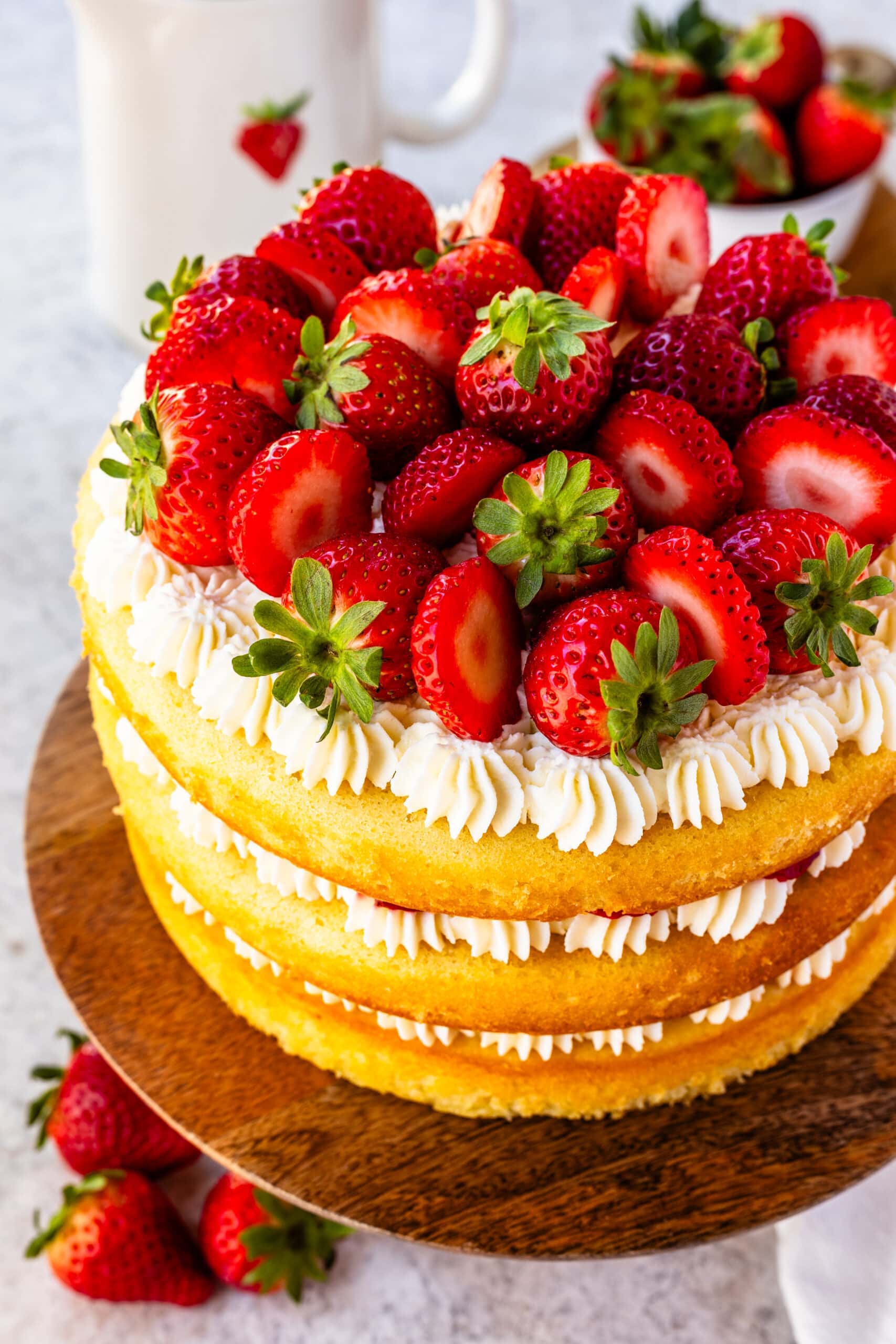
More Cake From Scratch Ideas
Find below a recipe for a simple vanilla cake from scratch, this is the same recipe used in my Yellow Cake with Fudge Frosting post. There are many other cake recipes from scratch on my website such as:
- Cookies and Cream Cake: layers of cookies and cream cake, filled with cookies and cream mousse, frosted with Oreo buttercream and ganache.
- Chocolate Birthday Cake: this recipe has my best chocolate cake recipe, with a delicious chocolate buttercream.
- Biscoff Cake: this cake recipe features a Biscoff cookie crumble baked into the cake layers, filled with Biscoff ganache, frosted with Biscoff frosting.
- Banoffee Cake: layers of moist and fluffy banana cake, filled with dulce de leche, topped with dulce de leche cream cheese frosting.
- Blueberry Cake: adding some blueberries to delicious vanilla cake layers takes this cake to the next level, filled with blueberry jam, and frosted with blueberry buttercream.
- Strawberry Cake: the cake batter is infused with strawberry flavor made from real strawberries, no cake mix involved.
- Pistachio Raspberry Cake: pistachio cake layers, made from delicious pistachio nuts, filled with raspberry jam, and pistachio ganache, with pistachio frosting.
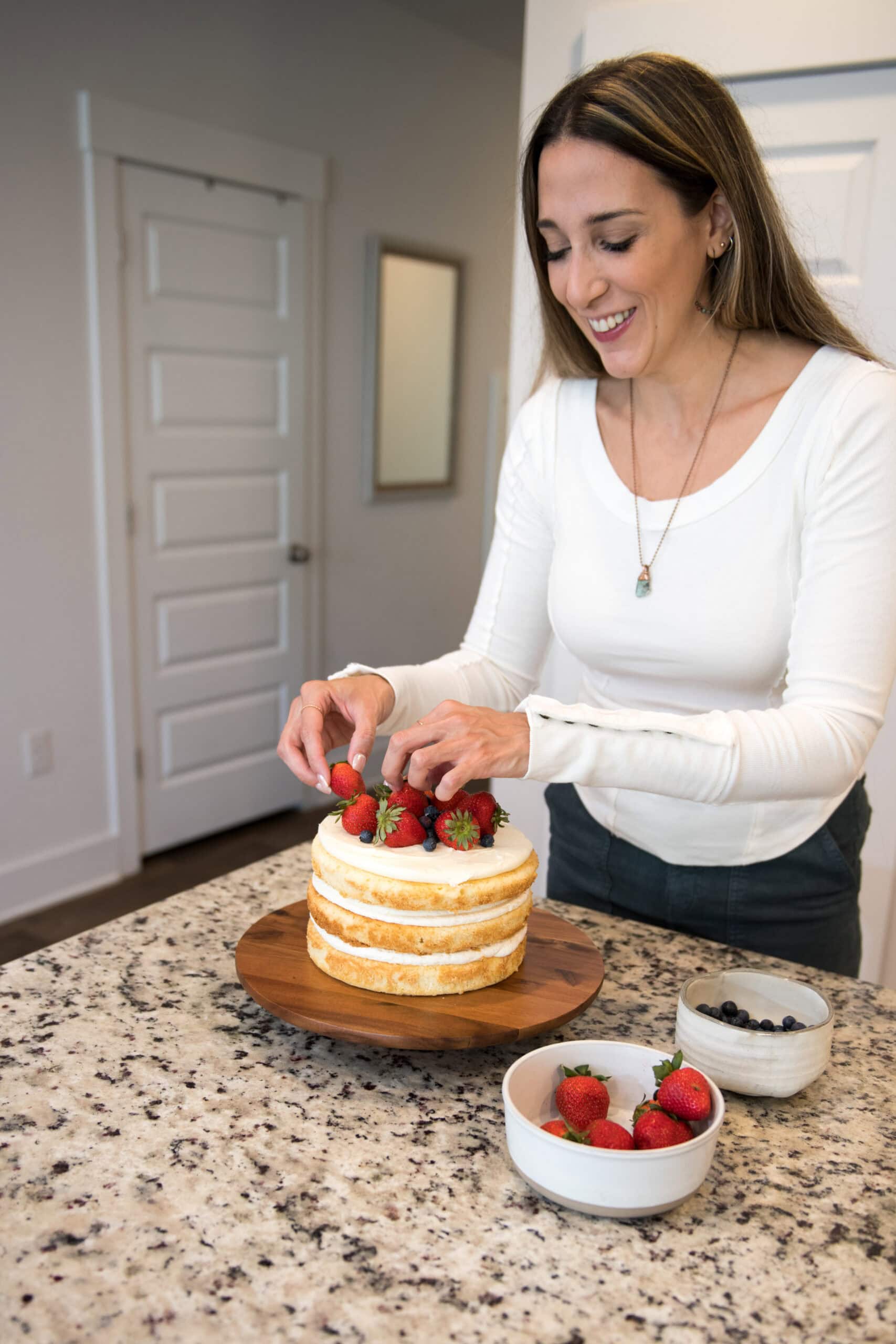
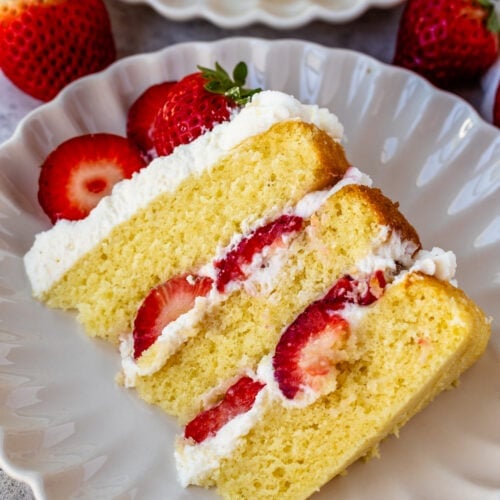
Vanilla Cake From Scratch
Ingredients
- 2 1/2 cups cake flour 258 grams
- 1 1/2 tsp baking powder
- 1/4 tsp baking soda
- 1/4 tsp salt
- 3/4 cup unsalted butter 169 grams, room temperature
- 2 tbsp vegetable oil 30 ml
- 1 1/2 cup granulated sugar 300 grams
- 3 large eggs room temperature
- 2 large egg yolks room temperature
- 1 tbsp pure vanilla extract
- 1 1/4 cup buttermilk 300 ml
Instructions
Vanilla Cake from Scratch
- Pre-heat the oven to 350ºF. Grease and line 2 9” round cake pans with parchment paper.
- In a bowl, whisk together the cake flour, baking powder, baking soda, and salt. Set aside.
- In a large bowl, or in the bowl of a stand mixer, beat the butter for 1 minute on medium speed. Add the sugar and the oil. Beat the ingredients together for two minutes, until the mixture is fluffy and light in color. If using a stand mixer, use the paddle attachment, or you can just use a hand mixer.
- Add the eggs and yolks, one at a time, mixing one egg completely until incorporated before adding the next one.
- Remember to scrape the bowl in between mixing.
- Add the vanilla, and mix to combine.
- Add one third of the buttermilk to the bowl with the batter, mix on low to combine.
- Next, add one third of the dry ingredient mixture. Mix on low speed.
- Add another third of the buttermilk and mix.
- Follow by another third of the flour mixture, mix to combine.
- Add the remaining buttermilk, and mix. Finish with the remaining flour, add it to the bowl and mix on low.
- You can finish by folding with a spatula, to avoid over mixing the batter.
- Divide the batter between the prepared cake pans.
- Bake in the pre-heated oven for 35 to 40 minutes, until a toothpick inserted into the cake comes off clean.
- Remove the cake from the oven. After 10 minutes, flip the cake onto a cooling rack or plate. Let the cake cool down completely. If you aren’t assembling the cake on the same day, wrap the completely cooled down cake in plastic wrap, and place in the freezer.


